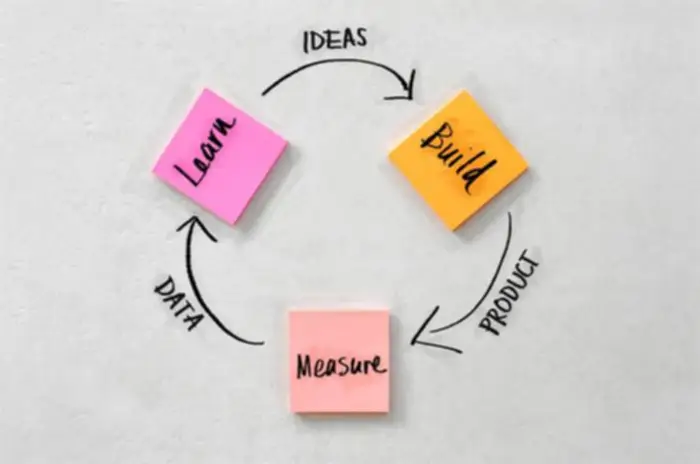If you put 1 million, it’s going to truly start 1 million threads, and your laptop computer is not going to soften and your system won’t grasp, it’s going to simply just create these tens of millions of threads. Because what actually loom java happens is that we created 1 million digital threads, which are not kernel threads, so we’re not spamming our working system with millions of kernel threads. The only thing these kernel threads are doing is actually simply scheduling, or going to sleep, but earlier than they do it, they schedule themselves to be woken up after a sure time. Technically, this particular example might simply be carried out with only a scheduled ExecutorService, having a bunch of threads and 1 million tasks submitted to that executor. It’s simply that the API finally allows us to construct in a a lot totally different, much simpler method.
Fibers: The Constructing Blocks Of Lightweight Threads
New best practices will have to emerge, in relation to sequencing results, concurrency, parallelism and actor systems. Futures will most likely keep, however there’s also a window of opportunity to improve the stack and use lazily evaluated IO wrappers, bringing even more useful programming to the Java world. Finally, programming in the “synchronous style” doesn’t need to be viral. If we are using one technique which does fiber-suspending blocking calls, this doesn’t impose any programming-paradigm requirements on the customers of the code.
Project Loom: Understand The Model New Java Concurrency Model
Not piranhas, but taxis, every with its personal route and destination, it travels and makes its stops. The extra taxis that can share the roads with out gridlocking downtown, the better the system. Servlets permit us to write down code that looks straightforward on the display. It’s a simple sequence — parsing, database question, processing, response — that doesn’t fear if the server is now dealing with just this one request or a thousand others.
(you Already Know) How To Program With Virtual Threads
Sometimes it does make sense to spawn more OS threads than hardware threads. That’s the case when some OS threads are asleep ready for something. For occasion, on Linux, till io_uring arrived couple years ago, there was no good way to implement asynchronous I/O for files on native disks. Traditionally, disk-heavy applications spawned more threads than CPU cores, and used blocking I/O.

Will Project Loom Obliterate Java Futures?
If you suspend such a virtual thread, you do have to hold that memory that holds all these stack strains somewhere. The cost of the digital thread will really method the price of the platform thread. Because in any case, you do have to store the stack hint someplace.

As we guessed, the riccardo digital thread was pinned to its carrier thread. The reactive programming initiatives try to overcome the shortage of thread sources by building a customized DSL to declaratively describe the info flow and let the framework handle concurrency. However, DSL is hard to grasp and use, dropping the simplicity Java tries to provide us. In such an method, every thread can use its personal local variable to retailer data. The have to share mutable states among threads, the well-known “hard part” of concurrent programming, drastically decreases. However, utilizing such an approach, we are in a position to easily attain the restrict of the number of threads we can create.
- When the number of most threads has been reached, every subsequent request might need to wait for a thread to be released to satisfy that request.
- That’s as a end result of their usage patterns must be completely different, and any blocking calls ought to be batched & protected utilizing a gateway, similar to with a semaphore or a queue.
- These paperwork comply with a specific format and are submitted to the OpenJDK website.
- If you look carefully, you will see InputStream.read invocations wrapped with a BufferedReader, which reads from the socket’s enter.
There’s an fascinating Mastodon thread on exactly that subject by Daniel Spiewak. Daniel argues that because the blocking behavior is totally different within the case of files and sockets, this should not be hidden behind an abstraction layer corresponding to io_uring or Loom’s digital threads however instead exposed to the developer. That’s because their utilization patterns ought to be different, and any blocking calls must be batched & protected using a gateway, such as with a semaphore or a queue. The whole level of digital threads is to maintain the “actual” thread, the platform host-OS thread, busy. When a virtual thread blocks, similar to waiting for storage I/O or waiting network I/O, the digital thread is “dismounted” from the host thread while another virtual thread is “mounted” on the host thread to get some execution accomplished.
It treats a quantity of duties operating in different threads as a single unit of labor, streamlining error handling and cancellation while bettering reliability and observability. This helps to keep away from points like thread leaking and cancellation delays. Being an incubator characteristic, this might go through additional adjustments throughout stabilization. With the structured concurrency approach, it’s not attainable simply to create a thread or a fiber as a side-effect and forget about it. All threads/fibers are scoped, and shall be terminated (by waiting or interruption/cancellation) when the scope which created them exits.

The primary concept to structured concurrency is to give you a synchronistic syntax to address asynchronous flows (something akin to JavaScript’s async and await keywords). This can be quite a boon to Java builders, making simple concurrent duties easier to express. As we will see, the tasks are totally linearized by the JVM.
Even fundamental control circulate, like loops and try/catch, have to be reconstructed in “reactive” DSLs, some sporting lessons with tons of of methods. Each of the requests it serves is largely unbiased of the others. For each, we do some parsing, question a database or concern a request to a service and wait for the result, do some more processing and send a response.
For instance, for instance you wish to run something after eight hours, so that you want a very simple scheduling mechanism. Doing it this fashion with out Project Loom is definitely just crazy. Creating a thread and then sleeping for eight hours, as a outcome of for eight hours, you’re consuming system sources, primarily for nothing. With Project Loom, this can be even an affordable strategy, because a virtual thread that sleeps consumes little or no resources. You don’t pay this huge price of scheduling operating system sources and consuming working system’s reminiscence. With just a few modifications, you can start using virtual threads in your Spring software and reap the advantages of its performance improvements.
Forget about thread-pools, just spawn a brand new thread, one per task. You’ve already spawned a model new virtual thread to handle an incoming HTTP request, but now, in the center of dealing with the request, you need to concurrently question a database and issue outgoing requests to a few other services? You want to wait for something to happen without wasting your resources?
Once we attain the last line, it’s going to anticipate all photographs to obtain. Once once more, confront that together with your typical code, the place you would have to create a thread pool, make certain it is fine-tuned. Notice that with a traditional thread pool, all you needed to do was primarily just be sure that your thread pool isn’t too huge, like one hundred threads, 200 threads, 500, whatever.
Transform Your Business With AI Software Development Solutions https://www.globalcloudteam.com/

